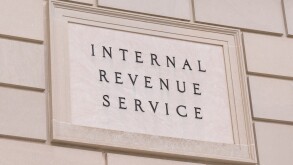The Inland Revenue Department (IRD) released an updated version of Departmental Interpretation and Practice Notes (DIPN) No. 42 in June 2020, dealing with the taxation of financial instruments and the taxation of foreign exchange differences. The update primarily reflects:
The judgment of the Court of Final Appeal in Nice Cheer Investment Limited v CIR (2013) 16 HKCFAR 813 (Nice Cheer), which held that accounting practice did not form an appropriate basis for the measurement of taxable profits where they contained unrealised profits;
The resulting legislative amendments (Inland Revenue (Amendment) (No. 2) Ordinance 2019) which took effect from March 1 2019, allowing taxpayers to elect to be taxed in respect of financial instruments on the basis of their accounting profits notwithstanding the verdict in Nice Cheer; and
The introduction of Hong Kong Financial Reporting Standard 9 Financial Instruments (HKFRS) 9, which makes significant changes to the accounting rules for measuring financial instruments.
The revised DIPN is not legally binding and sets out in some detail the effect of making an election to be taxed on an accounting basis and goes through various examples in the form of different financial instruments. It largely reflects established practice and marks a stepping back from the practice of assessing all taxpayers on unrealised profits as advocated in the previous version. The broad principles of taxation still take precedence over accounting presentation such that (among other things):
The distinction between capital and revenue for accounting purposes remains as best indictive for tax purposes and other relevant factors must also be considered;
The source of profits still needs to be determined separately;
The legal nature of a contract still takes priority over accounting classification, preference share dividends, for example, remain treated as dividends for tax purposes even if accounted for as interest.
Revised DIPN 42 mainly focuses on the case where a taxpayer has elected to be taxed on the accounting basis, although there are general comments on assessing practice and the impact of accounts in the appendix. These continue the IRD’s view that legal form should determine the taxability or deductibility of an item and that accounting entries should only be relevant once the source and nature of the amount has been determined.
It is not clear how fully these are supposed to apply to companies taxing on the realised basis and given that many companies will not elect to tax on the accounting basis, further guidance on this would be welcome.
The rules on bad and doubtful debts may be of particular interest. While the DIPN makes it clear that the normal restrictions on bad debts do not apply, it paraphrases the legislation in limiting deductions to losses on credit impaired assets.
In effect, Stage 1 and Stage 2 expected credit losses are not allowed while Stage 3 should be allowed. This has the advantage of reducing the need for additional analysis beyond what is required for the preparation of the accounts and it is hoped that following the logic laid out in the DIPN, the IRD might extend the logic of allowing a deduction for all credit impaired debts to companies also applying the realisation basis.
The IRD also provides some interesting comments on the deductibility of impaired assets, noting that most trading securities are measured at fair value with changes taken to profit and loss (P&L) and that any movement would therefore be reflected in the tax computation.
However, it also notes that where an asset is held for trading purposes but with fair value differences taken to other income or even recorded at amortised cost, an adjustment can be made in the tax computation as though it were recorded at fair value. It is not clear what sort of evidence the IRD would require to accept the trading intent where a deduction for impairment were being claimed.
Taxpayers should evaluate and consult with their usual tax advisors to weigh out the costs and benefits of adopting the realisation basis or electing to adopt the fair value accounting basis for tax assessment.
Lewis Lu
T: +86 10 8508 5002
John Timpany
T: +852 2143 8790













